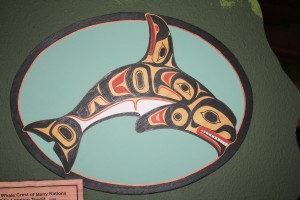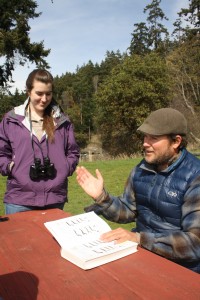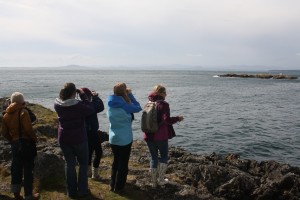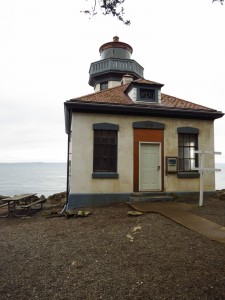A week has already gone by since we moved into Friday Harbor and we have been keeping busy with class and continuing our discussions on sustainability. In my reading I came across a really interesting paper called  Sustainable resource management coupled to resilient germplasm to provide new intensive cereal-grain-legume-livestock systems in the dry savanna. Try saying that 5 times fast. Although it seems a bit daunting its a really fascinating concept. In sub-saharan Africa people are dealing with increasing populations and demand for products while still restrained by the arid climate. After years of research from the ITA (Institute of Tropical Agriculture) researchers found that farmers were hesitant to implement potentially costly technologies without seeing immediate economic profits.
So the focus for the last 10 years has been on cereal-legume and crop-livestock systems where farmers make most of their money. After developing and testing several ideas researchers found the following to be most successful and profitable. They used promiscuous soybeans and dual-purpose cowpea lines which are more efficient at fixing nitrogen. Now don’t worry, its been a while and I wasn’t even sure about the definition of nitrogen fixation, I had to look up. It is the process of changing the structure of nitrogen in order to  free up nitrogen atoms so that they can freely interact with other chemicals. This is important because nitrogen is needed to biosynthesize the basic building blocks of plants. So more efficient nitrogen fixation results in greater crop production. Another problem farmers are facing is a weed called striga which is killing their crops. A soybean they have been working with is able to bring the striga to premature “suicidal” germination. After implementing these two ideas on several farms, farmers saw immediate results. On average crops showed a $1,233 dollar increase per hectare of crop. I think it is very cool that scientists and farmers were able to work together and mitigate a specific problem using crops they already had. By understanding the properties of crops they were able to develop a rotation system to maximize profit.
We’ve been continuing our work on sustainability but are now starting to branch into the research aspect of our course. Over the weekend we put together data sheets for gathering data at Lime Kiln this week and the next. hopefully our luck seeing the Orcas will improve. At the moment we’re working on designing some sort of whale song and dance to call the whales to us, since telepathy hasn’t been working. Either way it’s going to be an exciting week at Lime Kiln.
Read More
It seems like the fun never stops! Our first weekend on San Juan Island was fun-filled and packed full of adventure. The group decided to stay relatively local and explore the quaint town of Friday Harbor. Friday Harbor, although on first sight may look relatively small, in fact has many stores, parks, and of course a beautiful ocean front waiting to be explored. Because the weather looked promising we decided to take a fifteen minute row into town. This gave us an opportunity to see the island from the water; whetting our appetite for the weeks to come.  You get a completely different perspective from being in a little row boat among the larger, and might I add, fancier sail boats. Given our energy and enthusiasm, we headed straight to the whale museum.  The Friday Harbor whale museum is dedicated to promoting whale and environmental stewardship through a variety of displays, artifacts, and presentations. What a fantastic resource we have right on our door step. One of my favourite exhibits was the ‘whose your daddy?’ display.  I particularly appreciated having a visual of the matrilineal lines within the southern resident community (as genealogy often gets confusing). In addition to visiting the whale museum, we were able to wander around town. I loved discovering a used book shop called ‘Serendipity’ (it certainly lived up to its name). It was like walking in a cave of books—piles of books stacked from floor to ceiling. I could have spent hours looking through the, hundred or so, shelves.

Odin Lonning Tlingit- Killer Whale Crest of many nations
Throughout the weekend, I have continued to contemplate the concept of ‘sustainability science’, and the things I can do, in my research, to become a more conscious scientist. In light of this, the class calculated the total amount of energy consumed from five everyday objects. Given we will be living on the Gato Verde in a few weeks, energy consumption is an area we all need to be mindful of. In addition to this exercise, one of the assignments from the latter part of the week provided some food for thought. We were required to find a paper/case study on any topic of interest, as long as it fell within the sustainability science realm. I chose to research fisheries with a focus on community-based management. Last year I took a class on marine policy, and took a particular interest in community-based fisheries management as a way of promoting alternatives to centralized systems. My paper titled ‘The Context of Policy Design for Existing Community-based Fisheries Management Systems in the Pacific Islands’  looked at community-based fisheries management in a number of small Pacific Islands including Papua New Guinea, Vanuatu, and the Solomon Islands. My paper was very informative in terms of providing the reader with a good overview of national policy and highlighting some of the obstacles associated with implementing such a system. However, because the paper lacked data, it was challenging to analyze existing management schemes in relation to population trends of various species. If I was to continue with this project I would make every effort to collect data to be used as evidence to support this alternative approach to fisheries management. One thing I will take away from the paper is that there is a need for interdisciplinary research that combines human ecological, biological, and economic approaches. Interestingly, Bre’s paper also chose to focus on community-based management (this time regarding forestry in Nepal). Many parallels could be drawn between both our papers.
On a separate note we, as a group, have started to create our own data sheets for the research to be conducted at Lime Kiln. Over the next few weeks, we are going to be looking specifically at marine mammal, sea bird, and vessel abundance (and behaviour). Although the proposed data sheets are still in draft form, we are confident that they cover an array of potential observations. In preparation, we had a ‘birding lesson’ today with Jason Gunter. Despite the windy conditions, we were fortunate enough to see many Bald Eagles, in addition to a few Oyster Catchers, and the odd Cormorant.

What bird is it?

Avid bird watchers in action







 Twitter
Twitter LinkedIn
LinkedIn Facebook
Facebook